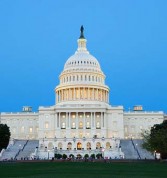 On Thursday, the Senate Appropriations Committee voted along party lines to approve FY2013 authorization for Labor-HHS-Education programs, including $68.5 billion for the Department of Education. This includes an $85 increase in the maximum Pell Grant award level, from $5,550 to $5,635, beginning in the 2013-14 school year. Funding for most other student financial aid programs would remain at current levels. Lawmakers approved an amendment which would allow students who lack high school diplomas or GEDs to qualify for federal financial aid by passing an “ability to benefit” test. These students had been ruled ineligible for federal aid in FY2012’s spending bill, as a cost-saving measure to help preserve funding for Pell Grants.
On Thursday, the Senate Appropriations Committee voted along party lines to approve FY2013 authorization for Labor-HHS-Education programs, including $68.5 billion for the Department of Education. This includes an $85 increase in the maximum Pell Grant award level, from $5,550 to $5,635, beginning in the 2013-14 school year. Funding for most other student financial aid programs would remain at current levels. Lawmakers approved an amendment which would allow students who lack high school diplomas or GEDs to qualify for federal financial aid by passing an “ability to benefit” test. These students had been ruled ineligible for federal aid in FY2012’s spending bill, as a cost-saving measure to help preserve funding for Pell Grants.
Under the Senate Appropriations bill, the Race to the Top competitive grant program for K-12 education reform would receive level funding with 2012 at $549 million, with a $51 million increase included at the subcommittee level being shifted to the Math and Science Partnerships program. Sen. Richard Shelby (R-AL) submitted the amendment to redirect the funding to the math and science program and bring its total funding up to $150 million in order to ensure that the funding continue to be distributed as a formula grant, rather than as a competitive grant, as required by the Elementary and Secondary Education Act when funding falls below $100 million. The college-level Race to the Top grant program aimed at containing rising college costs, for which the administration had requested $1 billion, would receive no funding from the legislation.
The “First in the World” program, which encourages colleges to develop innovative approaches to education, would receive $40 million. The 2013 spending bill would also increase funding for the National Institutes of Health (NIH) by $100 million: from $30.6 billion to $30.7 billion. Sen. Tom Harkin (D-IA), chair of the Appropriations Subcommittee on Labor-HHS-Education, said that the increased NIH funding will “promote our nation’s long-term economic prosperity” and “help the United States remain the world leader in biomedical research.”
In accordance with the Higher Education Opportunity Act of 2008, the Education Department released an updated snapshot of tuition and college costs around the country through its College Affordability and Transparency Center on Tuesday. The lists include institutions with the highest and lowest tuition, net cost to students, fees, and those whose costs are most rapidly increasing and decreasing. See the lists.
As a member of New England Council, we publish the DC Shuttle each week featuring higher ed news from Washington. This edition is drawn from the Council’s Weekly Washington Report Higher Education Update, of June 18, 2012.
Founded in 1925, the New England Council is a nonpartisan alliance of businesses, academic and health institutions, and public and private organizations throughout New England formed to promote economic growth and a high quality of life in the New England region. The Council’s mission is to identify and support federal public policies and articulate the voice of its membership regionally and nationally on important issues facing New England. For more information, please visit: www.newenglandcouncil.com.
[ssba]
